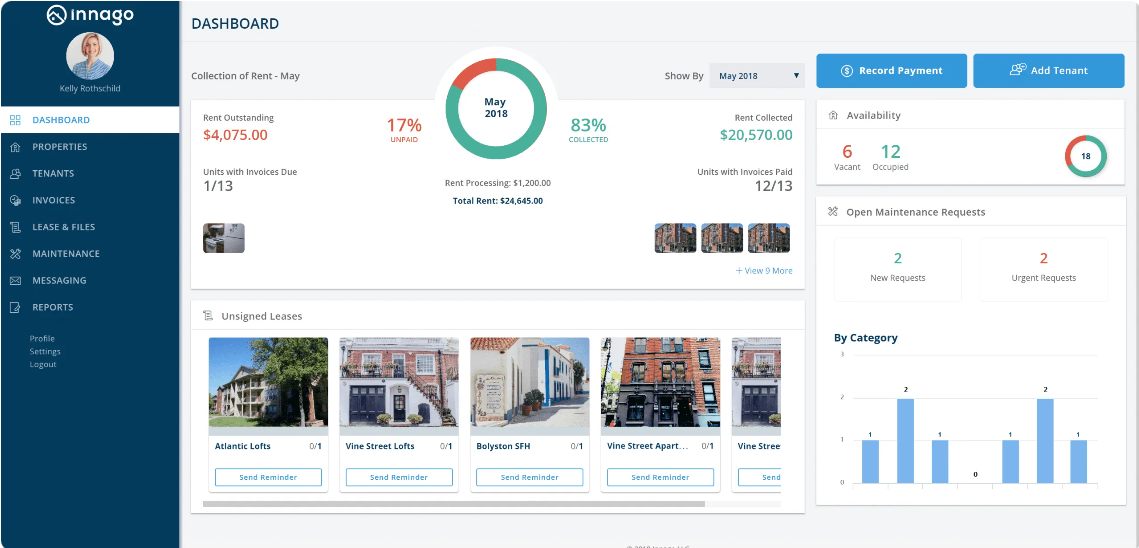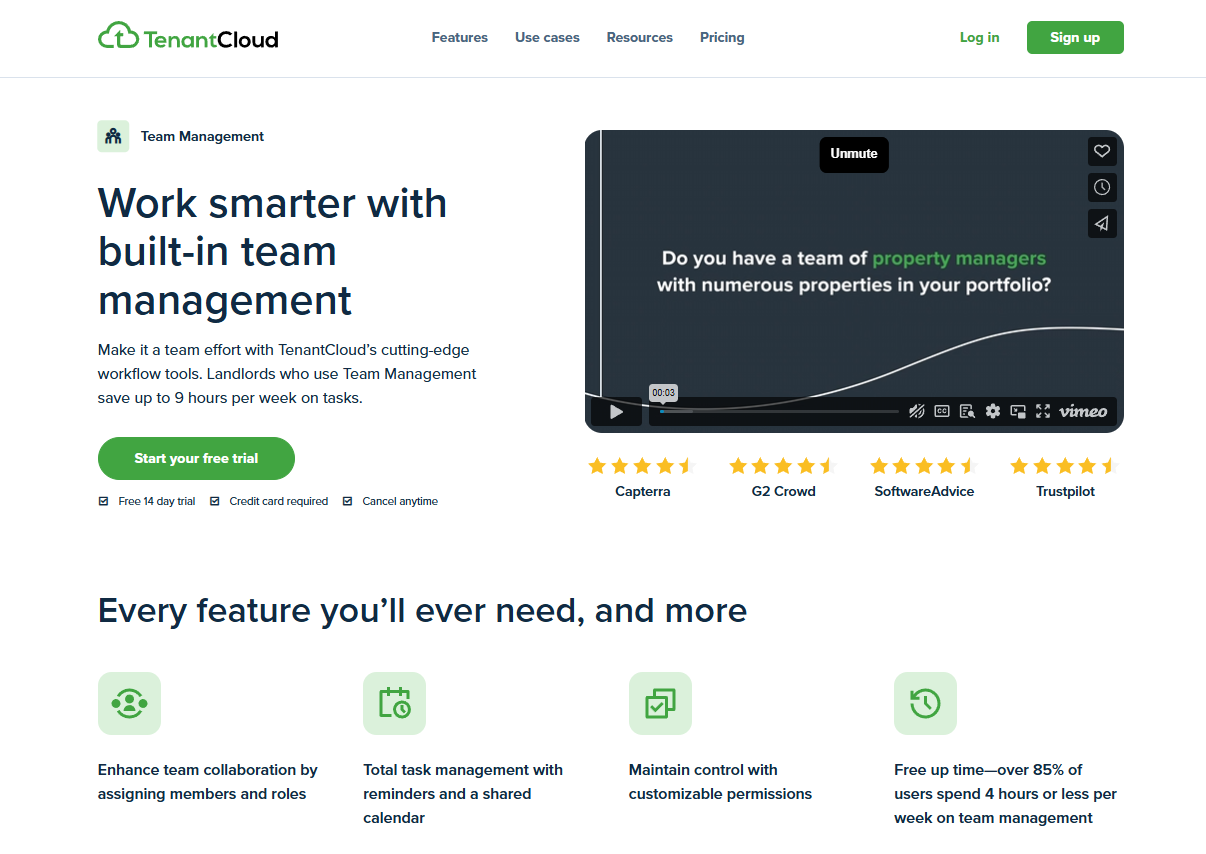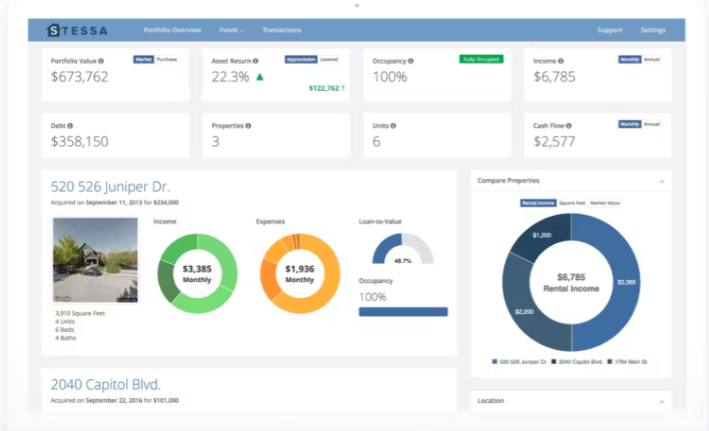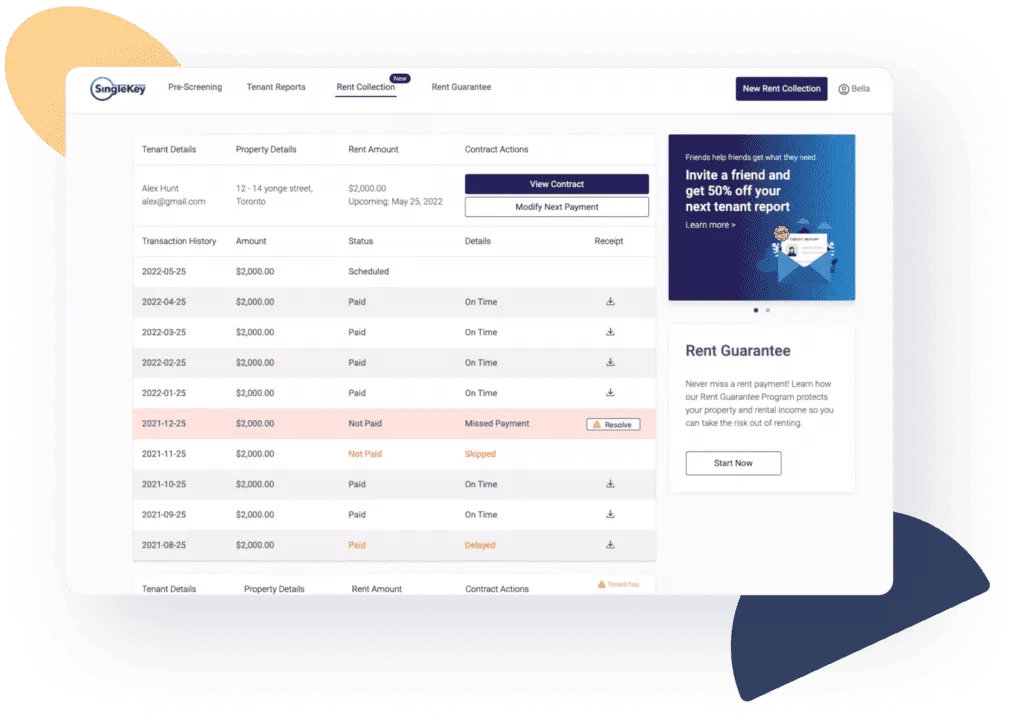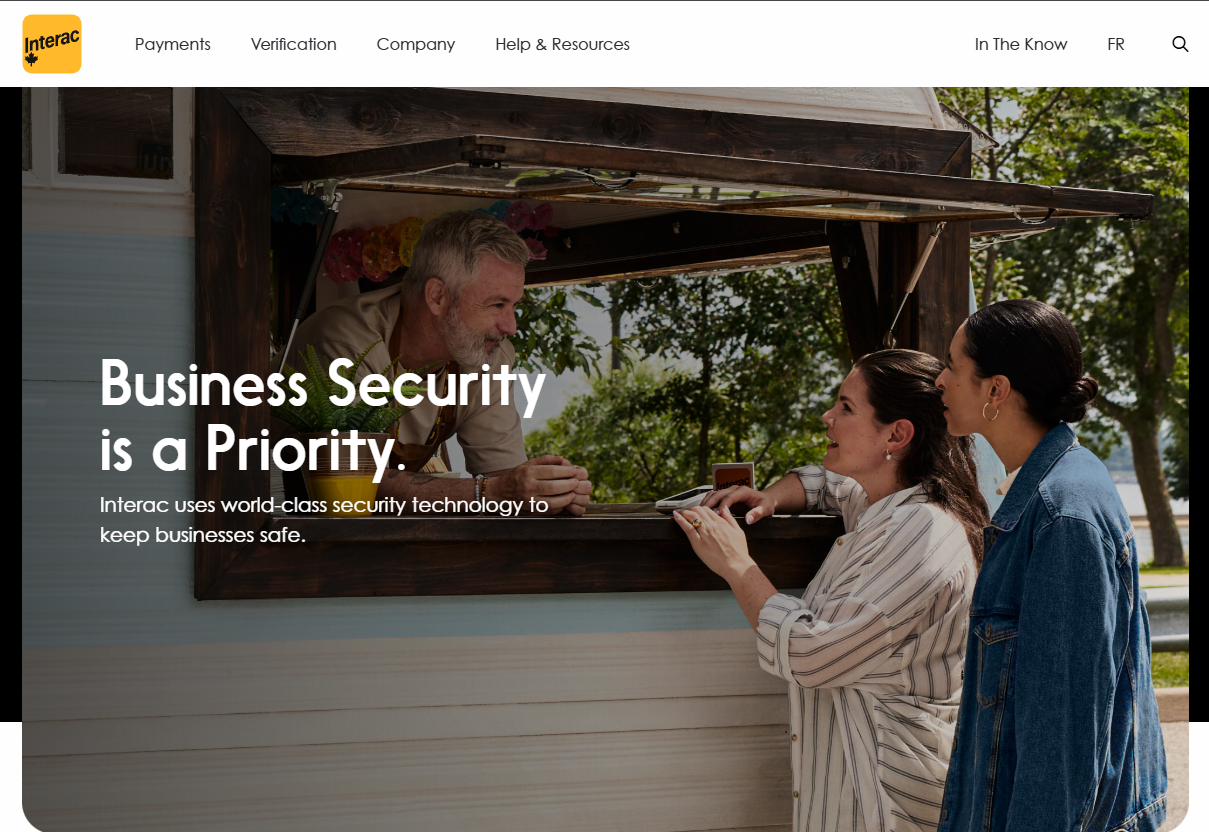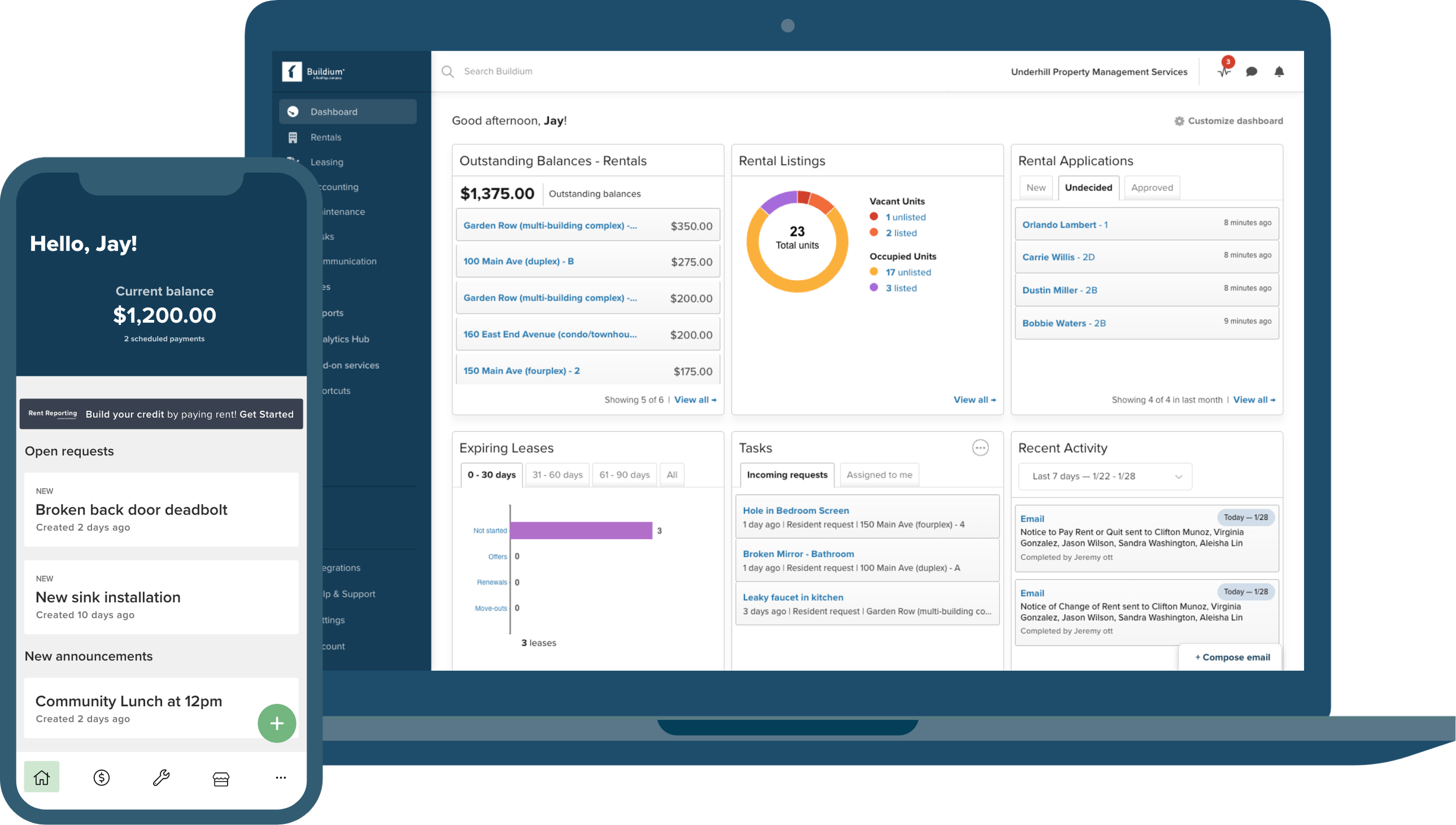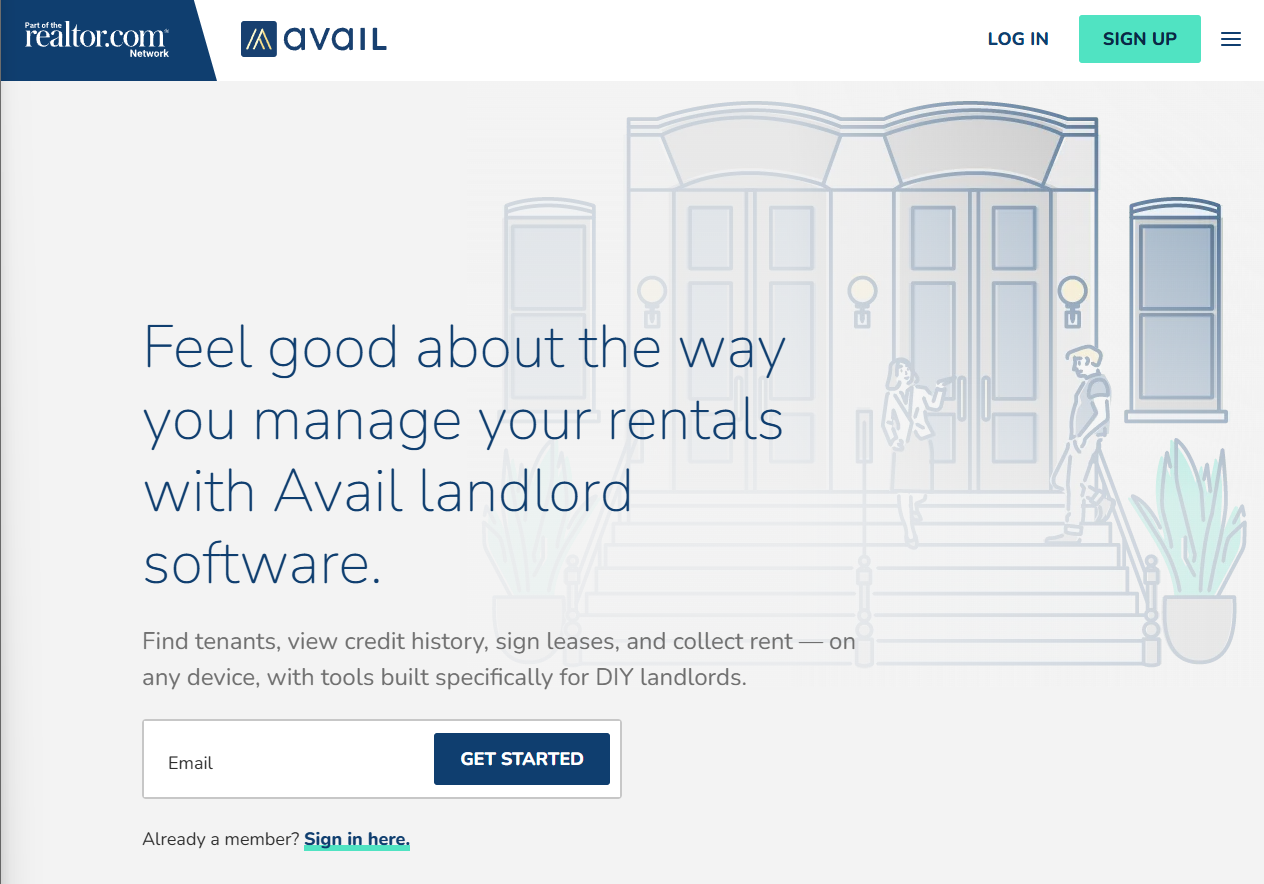10 Essential Property Management Tools for Solo Landlords in Niagara & GTA
Managing a rental property on your own in the Niagara region or Greater Toronto Area can be both rewarding and challenging. From staying on top of maintenance in a St. Catharines duplex to collecting rent from condo tenants in downtown Toronto, a DIY landlord wears many hats. The good news is that there are now plenty of digital tools to help streamline maintenance, tenant communication, administrative tasks, and rent collection, even if you’re a one person operation. In this post, we highlight ten must have property management tools (5 free and 5 paid options) that can help single family, multifamily, and condo owners succeed in managing their properties solo. These tools are all available to Canadian landlords, and we’ll note when a tool is tailored for Ontario or Canada specifically for maximum relevance in Niagara and the GTA.
5 Free Tools to Streamline Property Management
Digital property management platforms can centralize rent collection, maintenance requests, and tenant communications for landlords. Managing your property doesn’t have to break the bank. A number of excellent tools are available at no cost. Free platforms can cover the essentials of rental management, from tracking rent payments to handling repair requests. Below are five top free tools that Ontario landlords can start using today:
1. Innago – Free All-in-One Landlord Software
Innago is a 100% free online property management software designed for small to mid-sized landlords. It offers an impressive range of features: you can collect rent online, set up digital lease signing, run tenant screening reports, and even track maintenance requests in one place. You can view a detailed feature breakdown and comparison report on capterra.com. All your data (leases, payment history, expense receipts, etc.) is stored securely in the cloud for easy access. Innago simplifies day-to-day operations by automating tasks like rent reminders and providing expense and income reporting tools, which reduces manual paperwork.
For a solo landlord in Ontario, Innago delivers professional-grade functionality without any subscription fees (the service makes money through optional tenant-paid features, keeping it free for owners). It’s an ideal starting point if you want a comprehensive management hub at zero cost.
Availability: Innago is a U.S. based platform but is accessible to Canadian users as a web application, just ensure any payment processing features align with your local banking (or use the system to record payments made by Interac e-Transfer, described later).
2. TenantCloud – Free Up to 75 Units, Full-Featured Platform
TenantCloud is another powerful cloud-based property management platform that landlords can use for free (up to 75 units). You can view pricing details in their comparison post with other tools. It’s an all-in-one system with a three-way portal for landlords, tenants, and even maintenance service pros. This means TenantCloud not only lets you collect rent online and manage leases, but it also streamlines communication: tenants can log into a portal to send messages or maintenance requests, and you can assign those work orders to contractors through the platform.
Key features include online rent payments (supporting credit card, debit, ACH, or even cash/check logging), tenant screening (credit/background checks), advertising tools with listing syndication to multiple rental sites, and accounting with integrations like QuickBooks for serious bookkeeping. TenantCloud even gives you a free custom website for your property listings and has mobile apps for managing on the go.
Pricing: TenantCloud’s basic plan is free for up to 75 units, which is more than sufficient for most individual investors. If you grow beyond that, paid plans are available with more advanced features, but the free tier provides a robust toolkit for the DIY landlord. TenantCloud supports Canadian users – you can list properties in Canada and use features like maintenance tracking and tenant communication fully. (For rent payments, TenantCloud uses Stripe and other processors; Canadian landlords can still use these, though you might rely on Interac e-Transfers alongside it.) Overall, TenantCloud is “an all-in-one platform for landlords who want to handle everything from one dashboard,” making it our top pick for a free multi-purpose tool.
3. Stessa – Free Financial Tracking & Reporting
Keeping your finances in order is a huge part of successful property management. Stessa is a free tool focused on the financial performance of your rental property. It provides real time tracking of your income and expenses and generates useful reports and dashboards to visualize how your investment is doing. With Stessa, you can automate the import of transactions by syncing to your bank or credit card (it supports many major banks), so every rent payment, utility bill, or repair cost is logged. There’s a handy mobile app that lets you scan and categorize receipts on the go, which makes expense tracking a breeze. Stessa also has features for rent collection and rental document storage: tenants can pay rent through Stessa’s online portal if you enable it, and you can store files like lease agreements in your Stessa account.
All of these features come with the basic plan, which is completely free – ideal for new landlords or anyone managing a handful of units on a tight budget. For landlords in Toronto and Niagara, Stessa’s emphasis on Canadian friendly accounting (you can set your properties’ currency to CAD) and tax-ready reports can simplify tax time and help ensure you’re maximizing your rental income. In short, Stessa acts as your property’s finance dashboard, giving you clarity on cash flow, ROI, and budgeting without the need for complex spreadsheets.
4. SingleKey – Canadian Rent Collection & Tenant Screening
SingleKey is a proudly Canadian platform tailored to landlords’ needs, particularly when it comes to rent collection and tenant screening. SingleKey provides an automated rent collection tool that withdraws rent directly from the tenant’s bank account via pre-authorized debit (PAD) and deposits it to your account each month. This system takes the hassle out of collecting rent and drastically reduces late or missed payments; it even sends reminders and can automatically apply NSF fees if a payment bounces. Notably, SingleKey’s rent collection is free for small landlords: the service costs $0 for up to three tenants, making it perfect for those managing a few units. (Even beyond three tenants, the fees are modest and scaled – e.g. about $5 per additional tenant, keeping it budget friendly.)
Aside from payments, SingleKey is well known for its tenant screening reports, which include credit checks, background checks, income verification and more, drawn from Equifax and other databases see what are SingleKey’s Services?. You do pay per screening (around $30 per report), but there’s no subscription required – you can purchase reports as needed when vetting new tenants. They also offer free resources like downloadable Ontario lease agreement templates and a landlord knowledge base. Because SingleKey operates in Canada (with support for all provinces), it understands local regulations and credit systems, giving you peace of mind that you’re staying compliant.
For example, you can even opt into reporting rent payments to credit bureaus through SingleKey, which can incentivize tenants to pay on time and boost their credit score. In summary, SingleKey is an essential free tool for Canadian landlords who want to automate rent collection (especially popular in the GTA where many tenants are tech-savvy) and screen tenants thoroughly.
It integrates well with your existing process – for instance, you might find a tenant via your own advertising, then use SingleKey to handle the application screening and set up PAD for rent. With its “proudly Canadian” approach and free features for small portfolios, SingleKey is a no-brainer addition to your tool kit.
5. DIY Spreadsheets & Interac e-Transfer – The Free Essentials
Not every solution requires specialized software – many successful Niagara and Toronto landlords leverage general-purpose tools that are either free or already available to them. Chief among these are spreadsheets and Interac e-Transfers:
Spreadsheet Software (Excel or Google Sheets): A simple spreadsheet can serve as a property management ledger. You can track rent received, expenses paid, and even create a maintenance log in one workbook. As one experienced landlord quipped, “Google Sheets & Excel are as cheap as it gets” for managing the books. Using cloud-based spreadsheets (via Google Drive) has the advantage of being accessible anywhere and easily shareable (for example, with an accountant at tax time). You can set up monthly budget vs. actual income, keep a tenant contact list, and list maintenance tasks with dates. There are even free spreadsheet templates for landlords available online. While it’s not as automated as dedicated software, a well-organized spreadsheet is free, flexible, and under your full control – an essential tool for DIY administration.
Interac e-Transfer for Rent Payments: In Canada, Interac e-Transfer is ubiquitous, and it’s arguably the simplest way to collect rent electronically. Most tenants are familiar with sending e-Transfers via online banking. For landlords, the benefits are significant: funds typically deposit instantly or within minutes, there are no bounced cheques to worry about, and there’s an electronic record of every payment. In fact, accepting rent via Interac e-Transfer gives you immediate access to the money without waiting for cheques to clear, and operates on a “good funds” model – say goodbye to bounced rent cheques. It’s also easy to set up Auto-deposit, so you don’t even need to answer security questions; the money goes straight into your account. Many Ontario landlords instruct tenants to set up recurring monthly e-Transfers, which helps avoid late payments. Using Interac also streamlines record-keeping, which is especially helpful if you manage multiple properties; your bank statements or Interac history effectively become a log of all rent transactions. And beyond rent, you can use e-Transfers for paying contractors or reimbursing tenants (for example, if a condo tenant paid a repair and you need to pay them back). With robust security and no cost beyond what your bank might charge for transactions (many banking plans include free e-Transfers), it’s a cornerstone tool for Canadian landlords. In summary, by combining free spreadsheet tools for organization and Interac e-Transfer for payments, you cover the core management tasks (admin and rent collection) without any subscription fees. These DIY tools are highly effective for single-property landlords or anyone just starting out in the Niagara Region or GTA area.
5 Paid Tools Worth the Investment for Property Management
Free tools are fantastic, but sometimes a premium solution can save you even more time and provide peace of mind as you scale up. The following five paid property management tools offer advanced features and dedicated support, and they’re widely used by landlords and property managers across North America (including here in Ontario). If you’re managing multiple units or simply want to automate and professionalize every aspect of your rental business, these options are worth considering. Importantly, all of these paid tools are available to Canadian landlords – either they are Canadian companies or they support Canadian properties and currency.
Modern property management software (like Yardi Breeze shown above) offers intuitive dashboards and mobile access for on-the-go management.
1. Buildium – Professional All-in-One Management Software
Buildium is one of the most trusted names in property management software, used by over 20,000 property management companies and independent landlords. It’s an all-in-one platform that covers virtually every aspect of rental management. With , you can advertise vacancies, screen tenants (with built-in credit/background checks), create and e-sign leases, collect rent online (including automatic recurring payments and late fee enforcement), keep full accounting records, track maintenance work orders, and communicate through tenant and owner portals. In short, if there’s a task a property manager would do, Buildium likely has a feature for it. It also offers handy analytics and reporting so you can monitor your income, expenses, occupancy rates, and more at a glance. Buildium is a cloud-based system accessible via web and also provides a mobile app (the Resident Center app for tenants is highly rated for ease of use, and there’s a corresponding app for landlords).
Because of its comprehensive nature, Buildium is a paid product – pricing is based on the number of units. For a small portfolio (for example, under 5-10 units) you can expect a plan around $50–$60 per month. That investment can be well worth it if you value efficiency and accuracy: Buildium automates many time-consuming tasks, reducing manual errors and saving you hours. Many professional Ontario property managers (including some in the Niagara region) use Buildium to run their operations, and their landlord clients benefit from the streamlined processes.
In fact, our team at Zulma Property Management utilizes Buildium for our owner and tenant portals, which means our clients get real-time access to information and a very smooth experience. The software is Canada-friendly – it handles Canadian currency and integrates with payment processors that work here. Buildium’s support and knowledge base also cover region-specific questions (like handling Ontario Landlord and Tenant Board forms, etc.). Overall, if you’re a landlord with a growing portfolio in the GTA or you simply want top-tier organization for one or two properties, Buildium offers enterprise-level capabilities scaled down to what you need. It’s a powerhouse tool that can truly be “the engine that keeps you going” as one property manager put it, doing a lot of work behind the scenes so you don’t have to.
2. Pendo – Canadian-Made, Budget-Friendly Management App
For a more lightweight (and affordable) paid option, Pendo is gaining popularity, especially among tech-savvy landlords in Canada. Pendo is a Toronto founded property management platform built to simplify tasks like finding tenants, collecting rent, maintenance tracking, and tenant communications. It provides many of the same core features as the bigger softwares but at a lower price point and with a clean, easy-to-use interface. With Pendo, you can list your rental and capture leads, have prospective tenants fill out online applications, run credit checks, and then onboard the selected tenant with a digital lease signing. Rent collection is integrated, tenants can pay online and even purchase renter’s insurance through the platform. Landlords get automated income/expense tracking and individual dashboards for each property to monitor performance. Pendo also supports communicating with tenants (e.g., sending out group announcements or individual messages) and basic maintenance request management (tenants can log issues and you can track resolutions).
One standout aspect is that Pendo is built for both U.S. and Canadian users from the ground up. It handles CAD and USD, and it knows about Canadian renting norms. For example, the tenant screening can pull Canadian credit reports and the lease templates can be Canadian (it includes standard clauses compliant with local laws). The pricing is quite attractive: plans start at around $10 CAD per month for the Basic tier, which is far less expensive than many competitors for a similar feature set. Even the more advanced “Plus” and “Pro” plans (offering more detailed reporting or support for more units) are in the tens, not hundreds, of dollars per month.
Pendo also offers a 30-day free trial, so you can test it out on your properties risk-free. Users often praise Pendo’s intuitive interface and responsive support team. One thing to note: while Pendo covers the bases well, it doesn’t have some ultra-advanced features like vendor (contractor) portals or extensive automation beyond the basics. However, for a solo landlord or small portfolio, it hits the sweet spot by providing comprehensive tools for a low monthly cost, and crucially, it’s designed with Canadian market considerations in mind. If you want a step up from spreadsheets but aren’t ready to invest in a pricier platform, Pendo could be the perfect intermediate solution that grows with you.
3. Avail – Local Assist and Maintenance Tracking
Avail is a comprehensive property management tool that covers tenant screening, online rent collection, lease management, and maintenance requests. It’s user-friendly, making it an excellent choice for landlords who prefer an intuitive platform with reliable customer support, perfectly suited for Canadian landlords managing smaller portfolios.
4. Landlord Studio – Mobile-Friendly Management & Accounting
If you prefer doing things on your smartphone or want an emphasis on rental accounting, Landlord Studio is a paid tool to look at. Landlord Studio is a newer app (originating from New Zealand/UK but serving worldwide landlords) that has gained traction for its mobile-first design and robust expense tracking features. It helps you handle all the basics, creating rental listings, screening tenants, accepting rent payments online, and logging maintenance issues, but it shines in financial management. Landlord Studio essentially can replace your need for QuickBooks or manual ledgers: it lets you track every payment, attach receipts (you can snap a photo of a receipt with your phone and it will upload and even auto-extract details), and generate reports that make tax time much easier.
Many landlords appreciate the mileage tracking and categorization features for expenses, which are built with rental property schedules in mind. You can connect your bank accounts for automatic transaction import, helping you reconcile rent deposits and expenses effortlessly. It even has a tool to help with preparing a Schedule E (for U.S. taxes) or equivalent statements, which speaks to its focus on being a specialized accounting solution for landlords.
Beyond accounting, Landlord Studio’s other features are quite solid; tenant screening can be done through the app, you can set up reminders for lease renewals or inspections, and tenants can pay via a secure portal (payments go directly to your bank). The user interface is modern and simple, making it less daunting than some big platforms. It’s also fully cloud based, meaning you can use it on desktop as well, but the mobile app is what sets it apart. If you’re often on the go (perhaps you live in Toronto and manage a rental property in St. Catharines, frequently traveling between), having all your property info and task management in your pocket is a big plus.
Landlord Studio operates on a freemium model: there’s a 14-day free trial of the “Pro” features, and after that you can continue on a limited free plan (called “Landlord Studio GO”) or choose a paid plan for more features/users. The paid plans are quite reasonable – for instance, as of 2025 the entry-level paid plan was about $12 USD per month for a small portfolio.
Considering that it can save you from having separate accounting software (and possibly from costly bookkeeping mistakes), many find this price worth it. Landlord Studio does support Canadian currency and banks; Canadian landlords use it to track CAD income/expenses and even have tenants pay rent through Stripe in CAD.
One limitation is that certain integrated services (like tenant screening reports) might be U.S.-centric, but you can always manually input your own screening data. Overall, Landlord Studio is ideal for DIY landlords who want a slick, mobile-friendly tool to keep their rental business organized, especially on the financial side. It helps you stay audit-ready and financially optimized while also handling the day-to-day tenant and property interactions. In a sense, it combines the functionality of property management software with the rigor of accounting software, tailored specifically for landlords, no wonder it’s often described as “easier to use and cheaper than QuickBooks” for property owners).
5. Yardi Breeze – Scalable Solution for Growing Portfolios
The last tool on our list is geared towards those landlords who may be managing a larger number of units or who plan to scale significantly: Yardi Breeze. Yardi is a well-established name in property management technology (very popular with professional management companies), and Breeze is their simplified, cloud-based offering for small to mid-sized portfolios. It’s essentially a professional grade software made accessible to individual landlords. Yardi Breeze covers all the core areas: tenant marketing and screening, lease management, online rent payments, full double-entry accounting, maintenance tracking, and owner/tenant portals.
Where it often stands out is accounting and reporting, Yardi’s roots are in property accounting, so if you have complex finances or want extremely detailed financial reports, Breeze delivers robust tools (e.g., you can manage separate trust accounts, CAM reconciliations for multi-units, etc., though those features might exceed what a small landlord needs). The dashboard is user friendly, and there’s built-in chat support if you need help. Yardi Breeze also has optional add-ons, like integrated websites and AI leasing assistants, which larger landlords might find useful as they expand.
For a landlord managing, say, 20 or 30 units across the GTA, Yardi Breeze can be a one stop solution that handles multiple properties effortlessly. However, this power comes with a higher price tag. Yardi Breeze is priced per unit with a monthly minimum. For residential portfolios, the pricing was around $1 per unit, with a $100 USD monthly minimum (on an annual agreement).
In practice, that means if you have fewer than 100 units, you’ll pay the minimum $100 each month. This is significantly more than the other tools we’ve discussed for a very small landlord, so Breeze makes the most sense when you have enough units to justify it or you truly need the advanced capabilities and reliability of an industry-leading system. Some landlords choose Breeze if they want to start with a system that can scale – i.e., you might only have 10 units now (paying $100/mo), but you plan to acquire many more and don’t want to switch software later. If that’s your situation, Breeze will certainly scale with you (Yardi’s software is used to manage huge portfolios, so you won’t outgrow it). It’s also worth noting that Yardi Breeze is used in Canada by many firms, so it fully supports Canadian banking, taxes (HST on rent if applicable, etc.), and forms.
In summary, Yardi Breeze is a top-tier solution best suited for landlords who treat their rental operation like a growing business. It ensures you have no ceiling on capability should you buy an apartment building in Mississauga or expand into commercial properties, Yardi can handle it. But if you’re just renting out your own home or a condo, it’s probably more horsepower (and cost) than you need. Always consider your specific needs and growth plans: the best tool is one that fits your current portfolio while aligning with your future goals. Breeze (and similar high-end tools like AppFolio or Rentec Direct) are mentioned here so you’re aware of them as your portfolio expands. For many solo landlords in Niagara and the GTA, a simpler solution like those earlier on this list will suffice, but it’s great to know that solutions like Yardi are out there if and when you need them.
Bringing It All Together – Simplify Your Landlord Life
Being a solo landlord doesn’t mean you have to do everything manually. The right combination of tools can automate and simplify the most time-consuming aspects of property management:
Maintenance: Use platforms that allow tenants to submit maintenance requests online (like TenantCloud or Buildium) so nothing falls through the cracks. You’ll get organized work orders and can even involve contractors through some apps, ensuring faster turnaround on repairs and happier tenants. Even setting simple calendar reminders or using a task app for seasonal maintenance (gutter cleaning, HVAC servicing) can keep your property in top shape.
Communication: Consistent, clear communication is key to avoiding misunderstandings. Leverage tenant portals or even just email templates. For example, apps like Pendo and Yardi Breeze have built-in messaging systems, but you can also use free tools – a dedicated email for your rentals, or messaging apps to keep a record of conversations.
Some landlords set up a free Google Voice/WhatsApp line for tenant communications to keep it organized. Always respond promptly and professionally; these tools will help you stay on top of messages even if you’re juggling a day job.
Administration & Record-Keeping: Digital file storage (Google Drive, Dropbox) combined with property management software means you can go paperless. Scan and upload leases, receipts, inspection photos, and correspondence. Many of the paid tools provide document storage and even templates for common forms. Staying organized not only saves you time, it could save you money or legal trouble, for instance, being able to quickly pull up a signed lease or a maintenance record if a dispute arises. Use accounting features or spreadsheets to track every dollar. Stessa or Landlord Studio can generate reports that show you if you’re profitable and where you can cut costs.
Rent Collection & Financials: Perhaps the biggest stress for landlords is rent collection. By using online payment tools, whether it’s setting up Interac e-Transfer auto deposits or using an app that automatically withdraws rent, you remove the awkward “knocking on the door on the 1st” routine. Automating rent collection ensures consistent cash flow and reduces late payments by enforcing discipline (tenants know the system will log if they’re late). Plus, digital payments make bookkeeping easier (no more misplacing a cheque). As noted, SingleKey’s PAD system can do this in Canada. Always keep an eye on the financial reports the tools provide – they can alert you to things like increasing maintenance costs or rent payments that are trending late, so you can act proactively.
By adopting even a few of these tools, Niagara Region and GTA landlords can save countless hours and avoid many common pitfalls of DIY property management. You’ll be able to focus on the big picture, like finding the best investments and keeping good tenant relationships, rather than drowning in paperwork or chasing down late rents.
However, if at any point you feel that managing everything solo (even with these tools) is overwhelming or just not how you want to spend your time, remember that help is available. At Zulma Property Management, we specialize in taking the stress off landlords’ shoulders. Our team uses many of the above tools (and more) on your behalf, combining technology with local expertise. Whether you own a single-family home in Thorold or a portfolio of condos across Toronto, we can tailor our services to your needs; from tenant placement to full-service management. Many of our clients start as DIY landlords and later decide their time is better spent elsewhere – and that’s where we step in to provide peace of mind.
Bottom line: Embrace the tech tools that fit your comfort level and budget. Start with the free resources to tackle immediate pain points (like an organized spreadsheet for finances or an app for rent reminders), and consider upgrading to a paid platform as your business grows or as you want more automation. By leveraging any of these 10 property management tools, you’ll find land-lording in Ontario becomes much more efficient and rewarding, and you’ll set yourself up for success in the long run.
Ready to Simplify Your Property Management?
Try a Free Tool: Pick one free platform (Innago, TenantCloud, etc.) and sign up to see how it can streamline your current process. For instance, you might start collecting next month’s rent through a free online system to save a trip to the bank.
Automate One Task at a Time: Identify your biggest headache (be it rent collection or maintenance calls) and use a tool above to automate it. Small steps like setting up Interac e-Transfer auto-deposit or an online maintenance form can make a huge difference.
Evaluate Paid Solutions for Value: Consider the time you spend on administration. If it’s more than a few hours a month, a $10–$50/mo. tool might actually save you money (time is money!). Many paid tools offer free trials, take advantage of those to test drive a system with your real data.
Stay Organized and Document Everything: However you do it, software or spreadsheets, commit to keeping good records. Update your income/expense ledger monthly, store important emails or texts with tenants, and schedule regular check-ins on your property’s condition. The tools above will help, but consistency is key.
Don’t Hesitate to Ask for Help: Managing property isn’t always easy. If you’re in the Niagara or GTA region and want professional assistance, reach out to Zulma Property Management for a free consultation. We can advise you on the best tools for your situation or handle the day-to-day management so you can enjoy truly passive income.
